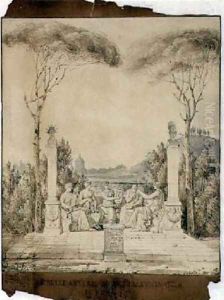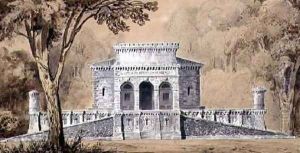Louis Hippolyte Lebas Paintings
Louis Hippolyte Lebas, born in 1782, was a prominent French architect whose contributions to the field of architecture were marked by a distinctive blend of neoclassical elements with emerging trends of his time. Lebas' career was situated within a period of architectural transition, where the strict classicism of the past began to give way to more eclectic and innovative approaches. His education and formative experiences in architecture were deeply influenced by the teachings and works of leading architects of the day, which would later manifest in his own diverse projects.
Lebas' professional journey was notably enriched by his participation in the Prix de Rome, a prestigious scholarship for arts students, which enabled him to study in Rome. This experience significantly influenced his architectural style, imbuing it with a robust classical foundation while also sparking an interest in integrating contemporary and historical architectural elements. Throughout his career, Lebas undertook various projects, ranging from public buildings to private residences, each marked by a keen attention to detail, functionality, and aesthetic appeal.
One of Lebas' most significant contributions was his role in the development and construction of the Prison Saint-Lazare in Paris. This project underscored his ability to blend utility with architectural elegance, creating spaces that were both functional and visually appealing. Moreover, his involvement in educational institutions, including the design and construction of schools and colleges, highlighted his commitment to creating environments conducive to learning and development.
Lebas' architectural legacy extends beyond his individual projects. He was a respected educator, imparting his knowledge and passion for architecture to a new generation of architects. Through his teaching, he emphasized the importance of historical knowledge, technical skill, and creative innovation, principles that continue to influence the field of architecture. Louis Hippolyte Lebas passed away in 1867, leaving behind a body of work that not only enriched French architecture but also contributed to the broader narrative of architectural development during a pivotal period in history.

